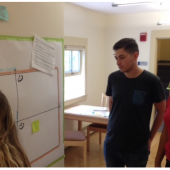
Abstract: Sustainability education can productively focus on concepts and/or skills, each playing an important role in preparing students to promote sustainability in society. We describe here the skills-based curriculum in an environmental sustainability practicum designed for undergraduate students. Although our curriculum provides training in numerous relevant skills, we focus here on one in particular: scenario planning. Originally developed in the 1970s by Shell Oil to develop robust business strategies in the face of future uncertainties, scenario planning is applicable to any planning domain where future conditions may be driven by the outcome of critical unknowns. For example, planning for effective community resilience in the face of climate change may depend on the degree of government support for renewable energy systems. In this practicum, students work in teams of 3-4 on the same challenge: Assess a specified human-natural system for its vulnerability to climate change in the next 20 years and develop solutions that effectively increase the resilience of the system in the face of uncertainty.
Scenario planning involves six steps: (1) Identify driving forces for future changes; (2 and 3) Identify certainties and uncertainties for future conditions; (4) Rank uncertainties by the degree to which they might affect future conditions; (5) Create a 2×2 grid of possible future scenarios based on the two most influential uncertainties; and (6) Describe the future world in each of these four scenarios. Using creative ideation techniques developed by IDEO for their Human-Centered Design methodology, students then use these four scenarios as the basis for envisioning effective strategies for promoting resilience regardless of how the critical uncertainties unfold (adaptive planning) or for influencing uncertainties to increase the probability that preferred scenarios manifest.
Human beings today are living in times of unprecedented social and ecological crisis, a crisis that is to a significant degree of human making. The impending arrival of the Anthropocene geological epoch gives this crisis a name. As academics with a sense of responsibility for our relationships with planetary kin, the awareness of unfolding crisis calls on us to reach a deeper understanding of assumptions about the world, and of modes of living that these assumptions permit, which have been a human contribution to crisis. Furthermore, the Anthropocene calls us to act upon our new understanding. Taking modern European imperialism as a key generative force in the development of Anthropocene, we provocatively develop the idea in this article that the life-ways and worldviews of Indigenous Peoples colonized by European imperialism – including, potentially, marginalized and suppressed life-ways and worldviews of Indigenous Europeans – may hold critical insights by which to negotiate the Anthropocene and to challenge and change habits of thought and action that have led us to its threshold.
In doing so we outline the rationale behind the Alliance for Intergenerational Resilience (AIR) whose objective is to build social-ecological resilience by connecting and supporting locally based projects for the innovative and renovative co-evolution of social and ecological systems. AIR aims to generate inter-cultural relationships between Indigenous communities and communities no longer considered indigenous to place in order to support more meaningful, life-giving social and ecological relationships for all people. In order to further describe AIR’s objectives and its aspirations, the article draws on the Alliance’s inaugural event, the Elders’ Voices Summit, four days of Indigenous-led sustainability education with more than 100 international participants, representing community, university, government, philanthropy and not-for-profit sectors. We conclude by casting our hopes forward to envisage future re-indigenization work that supports the connection and reconnection of human beings with the Earth and the places of the Earth to which we belong.
Continue Reading
Abstract: Healing a world on the brink of eco-social collapse requires an understanding of how planetary health has declined, how sustainable societies worked before, and how we can restore them. Global colonizing processes established a worldview of economic domination and competition that has had detrimental impacts upon our social and environmental systems. Archeological and mathematical studies of the rise and fall of human civilizations concluded that egalitarian societies with low environmental exploitation were the longest lasting in human history, and that high economic stratification, and/or overexploitation of resources were precursors to societal collapse. Indigenous community systems were relatively egalitarian and environmentally sustainable. Hypothetically, if we use Indigenous eco-social systems as a guide for community planning, then eco-social collapse can be averted, and eco-social resilience and sustainability can be restored. A framework of Indigenous principles and practices is included, with examples of goals, activities and indicators.
Continue ReadingAbstract: This thought piece proposes the adoption of a new “3 Rs” to inform a climate-responsive environmental and sustainability education (CRESE): reclamation, resilience, and regeneration. As a changing climate becomes the larger campus of our learning, denial and top-down emergency preparedness both prove to be insufficient. We are invited into a deeper approach. Reclamation and resilience fold in (1) the saving of enduring biocultural lifeways and patterns and (2) the dynamic flux-states of panarchic socioecological resilience models. These two partner with (3) regeneration: context-responsive social collaborations; eco-socially-embedded capacity building systems; and the promise of regenerative design. These three approaches allow us to re-envision educational systems and encounters that are proactive rather than only reactive or responsive in metabolizing persistent climatic volatility. These three approaches – reclamation, resilience, and regeneration – echo the three approaches to climate change that Pelling has suggested (2009) – mitigation, adaptation, and transformation. Note, however, unlike Pelling’s model, these approaches are conceived as simultaneously requisite literacies and movements rather than as competing. Reclamation, resilience, and regeneration represent ever-more-complex types of capacities and support capacity building aimed together toward life-supportive, dynamic, complex systems transformations. Environmental and sustainability education that fosters skills of reclamation includes preservation, conservation, recording, and the establishment of libraries and sanctuaries of exemplar systems. Environmental and sustainability education (ESE) for resilience includes network extension and adaptive capacity building. ESE for regeneration nurtures emergent complex systems metacognitions, creativities, and transformative, transgressive social approaches that are connective, disruptive, and innovative and model and embody complex emergence. Regenerative ESE fosters skills to facilitate catalysis of emergent regeneration, self-organization, and transformation into more complex living systems. All of these position embedded learners in pro-active, systems-intensive embodiments of the types of living networks that foster survival, flexibility, thriving, and phase-change during our entry into a time of consistent climate turbulence.
Continue Reading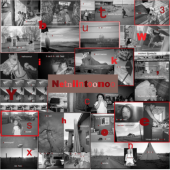
While place and culture endure, place and culture both change. This paper focuses on
the ways this paradox has shaped the idea of “resilience” for the Northern Arapaho people, and
the ways in which we have used it to guide educational programs. We first introduce “place” and
what it means to the Northern Arapaho people. We then offer three examples of culturally
responsive place-based programs that involve photography and changing technology. Finally, we
discuss the Arapaho word teiitooniine’etii (to live quietly, live calmly) and suggest that in both
enduring values, and adaptation to new technologies and times, we find resilience as a people.

Effective sustainability education is constrained, in part, by an inability to consistently define what it is, who it is for, and how it can best address present-day concerns. Often reduced to a set of behaviors with a future orientation for intergenerational security, sustainability loses the immediacy and importance of issues like hunger, homelessness, and the impact of toxic industry practices on real people in real communities, despite the fact that these all represent foundational aspects of sustainability. Critical sustainability harnesses place and community to make connections between equity, ecology and economy explicit. Requiring a deep connection with the socio-ecological landscapes of our experiences, critical sustainability utilizes individual and community identities in working towards resilience. In this paper, we explore the ways that participatory action research (PAR) can leverage place and community to disrupt systems of power and privilege and demonstrate this approach as both effective pedagogy and a powerful orientation toward addressing community-level climate change adaptation. We contend that critical sustainability education requires sincere engagement with place, along with the shared, community-driven knowledge production that is the cornerstone of PAR.
Continue Reading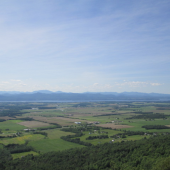
This case study describes the experiences developing and teaching a course entitled “Understanding Place” at the Middlebury School of the Environment 2015 summer session. The course sought to include multi-disciplinary approaches to place while simultaneously engaging students and faculty in hands-on projects across the Champlain Valley in Vermont. Rather than engaging in depth with specifics of environmental history in the Champlain Valley, however, students were asked to apply the multiple perspectives encountered in the course to develop elements of a “toolbox” related to understanding the significance of place in a world increasingly characterized by globalization and mobility. In other words, rather than learning complex details and history of a singular place, students developed perspectives for understanding, valuing, and protecting the many places where they may live throughout their lives. At the conclusion of the course students were asked to teach other members of the Middlebury community about their findings. This collaborative effort over six intensive weeks between students and faculty resulted in a creative pedagogical tool—an “understanding place cookbook”—that was shared with all School of the Environment participants, faculty, and staff. While this case study is grounded in the specific context of the Middlebury School of the Environment, it points to tools and experiences that could be useful for developing globally aware place-based education at any institution, bringing an appreciation of global stratification and inequality into localized efforts toward community sustainability and resilience.
Continue Reading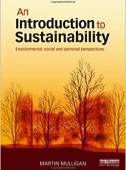
Abstract: Martin Mulligan’s An Introduction to Sustainability: Environmental, social and personal perspectives reviews the history of sustainability science, placing emphasis on the social-ecological model. This model introduces the importance of personal values and choices. He discusses topics around four themes: limits to growth, diversity, community and resilience. It is well-written, informative and novel.
Mulligan, M. (2014). An Introduction to Sustainability: Environmental, Social and Personal Perspectives. New York: Routledge. ISBN-13: 978-0415706445
Continue Reading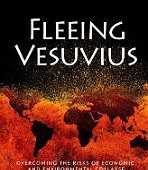
In this concise and useful review, Tina Evans brings forth the high points of Douthwaite and Fallon’s comprehensive book about economic collapse, especially featuring those aspects of the book that might contribute to courses on sustainability and peak oil.
Continue Reading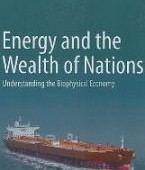
In this insightful review, Tina Evans makes the case for Hall and Klitgaards’ work as going beyond more superficial ecological economic analysis into a deeper realm of biophysical economics where human economies do not just depend on a natural resource base, but are part of it. She is impressed by how thoroughly the book delves into the many theoretical and interdisciplinary aspects of biophysical economics, while engaging the reader and presenting a coherent common theme throughout.
Continue Reading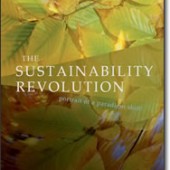
In this short succinct and insightful piece, Andres Edwards elegantly pushes for moving beyond “green” economics into a solution-based approach to sustainability issues. He calls for a view that puts humans and their economics squarely back into nature in a way that will lead to “reliable prosperity” through “SPIRALS” initiatives that are: Scalable, Place-based, Intergenerational, Resilient, Accessible, Life-affirming, and involving Self-care
Continue Reading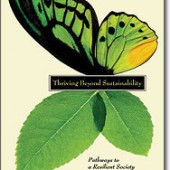
Rick Medrick gives context for Andres Edwards’ new book that takes us beyond sustainability to thriveability. The book suggests that, as the sustainability movement gathers force in the realm of all 3 “E’s” (ecological, economic, social equity), we are at a point of moving towards establishing a newly organized social and ecological environment. Strategies that will allow this to be a thriving environment, according to Edwards, are “SPIRALS:” Scalable, Place-making, Intergenerational, Resilient, Accessible, Life-affirming, and Self-caring.
Rick Medrick nos da un marco de referencia para el libro de Andres Edwards que nos lleva mas allá de la sustentabilidad a la “thriveability.” El libro propone que, mientras el movimiento de sustentabilidad gana fuerzas en el área de los tres “E’s” (ecológico, económico, equidad social), estamos al punto de establecer un ambiente social y ecológico mejor organizado. Las estrategias que nos permita crear este ambiente de superarse, según Edwards son “SPIRALS”: Escalable, Del Lugar, Intergeneracional, Resiliente, Accesible, Afirmando la Vida, y Auto-Cuidando.
Continue Reading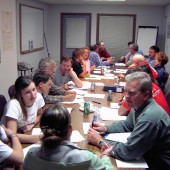
Greg Smith shows us, through his numerous interesting real-life educational stories, how place- and community-based education can bring a true spirit of opportunity to public school students. He argues that true sustainability will come about through local efforts of the current generation of students to guide and form our future.
Continue ReadingAbstract Today we find ourselves standing in the crossroads of our future. Will we learn from our past mistakes and successes or become yet another story of societal and ecological collapse? As sustainability educators we are called to consider our contribution to education innovation by asking, as does Stephen Sterling (2001), what is education innovation, […]
Continue Reading